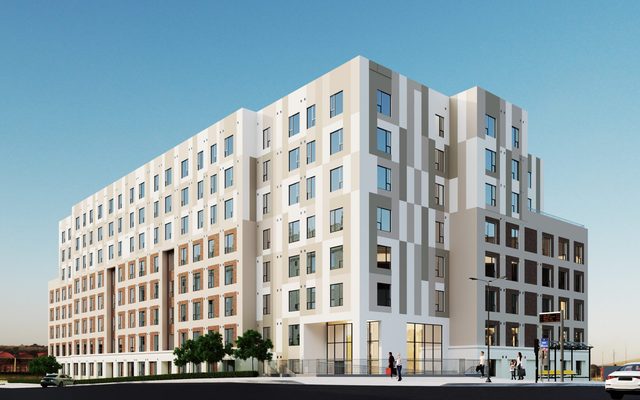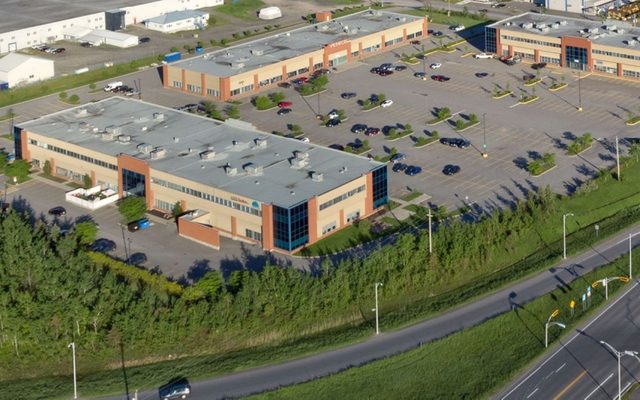As a vice president at Savills, Jarrod Bogler has more than a decade of experience advocating for tenants in Toronto’s suburban office markets.
The seasoned sales rep is adept at negotiating the best deal for his clients, and helps secure office space that aligns their current needs with their future business goals.
Bogler spoke to Green Street News about the type of space that’s attracting users, what’s shaping their leasing decisions and what factors will influence the office market in the years ahead.
What trends are influencing activity in the office leasing market right now?
The flight-to-quality trend is real, but users aren’t just going to new buildings. They’re looking for buildings where landlords offer a high-value proposition to tenants. Buildings that have a strong focus on the employee experience, that offer high-quality amenities, beautified common areas, focus on ESG and are easily accessible for drivers and people taking transit.
“Transit accessibility will dictate where future office development occurs”
I really see the future of office development being transit oriented. The city is investing heavily in it – with the Eglinton Crosstown LRT once it finally gets finished and the new Ontario subway line that they’re digging – and transit accessibility will dictate where future office development occurs, once we start building office again.
What are some examples of these in-demand buildings?
Some downtown examples are 145 King Street West and 150 King Street West. Those are Class-A buildings that are right on top of the subway. They’re both very well leased up.
In the suburbs, the Aerocentre complex [on Explorer Drive] is close to Toronto Pearson International Airport and the buildings are high quality. It has good value prop because of the amenities that are on site. 10-20 Carlson Court also has great amenities, and it’s easily accessible from major highways.
Are users gravitating towards a certain type of space?
I think that companies are being very guarded with their capital right now because of the economic circumstances. Interest rates are coming down, but they’ve found it very difficult to rationalize dumping a whole bunch of capital into real estate. When you’re making real estate decisions – whether you are expanding, contracting, relocating – these decisions are capital intensive. Yes, you may save money on rent in the long run, but you still have to put out money today to make those physical changes to your space.
So, there is orientation towards plug-and-play space. Landlords are having a lot of success with model suites. They can be a little bit more flexible in the length of the lease term if they’re pre-building space because it eliminates the capital spend for the tenant and they have a greater probability of renewing the tenant on the back end of the initial term.
What about geography – is there an area within Toronto that’s attracting more deals?
There has been a lot of leasing activity downtown recently. But I would say that Toronto West – Mississauga, Oakville, Burlington – that’s probably been the most active node that I have observed.
If we look at the numbers, year to date, net absorption downtown is about positive 750,000 sq ft versus negative 50,000 sq ft in the suburbs. The downtown numbers are slightly skewed towards larger transactions versus volume of transactions, and the absorption numbers for the suburbs vary dramatically based on geography. In the west, we’ve had positive 234,000 sq ft of absorption versus negative 37,000 sq ft in the east and negative 245,000 sq ft in the north.
Are return-to-office mandates becoming more of a factor in companies’ leasing decisions?
I think a lot of companies are still searching for the right formula for their hybrid work model. Most of them want their people back in the office, but there is a bit of a balancing act with respect to employee expectations and the operational needs of the business.
“A lot of companies are still searching for the right formula for their hybrid work model”
With that being said, recently I’ve worked on fewer downsizing deals and more right-sizing. And some expansions as well. If I look at the last 20 deals that I’ve done this year, most of my clients are renewing at the same amount of space that they have today. Many are investing some capital into that space on the landlord’s dollar or reusing leaseholds from a prior tenant.
As tenants look to right-size their space, are there any unexpected roadblocks they’re running into?
Financing has been a significant roadblock. There’s a lot of office-building debt that’s maturing next year and in 2026. As landlords enter into new financing arrangements, their deal parameters may become stricter or they could have other limitations enforced by their lenders, which will trickle down and impact tenants.
As that debt matures, it will affect how landlords can structure deals. It will affect their leasing pro formas and what levers they can afford to pull in a negotiation. It will affect their ability to put cash into deals, and it will affect the terms of the lease that they’re ready to negotiate.
What other factors do you think will influence leasing in 2025 and 2026?
I think the biggest factor is uncertainty in the near-term economic environment. Will the Bank of Canada keep cutting interest rates, what will long-term bond yields be and what will the effects of the new U.S. administration be on the Canadian economy?
A large part of Toronto’s tenant base is made up of U.S. companies that sell to the Canadian market and see an economic advantage in operating here. The new U.S. administration and the policies they introduce will have a big impact on how much these companies want to invest in Canada. The more aggressive our dollar is, the more of an advantage they have operating here.




